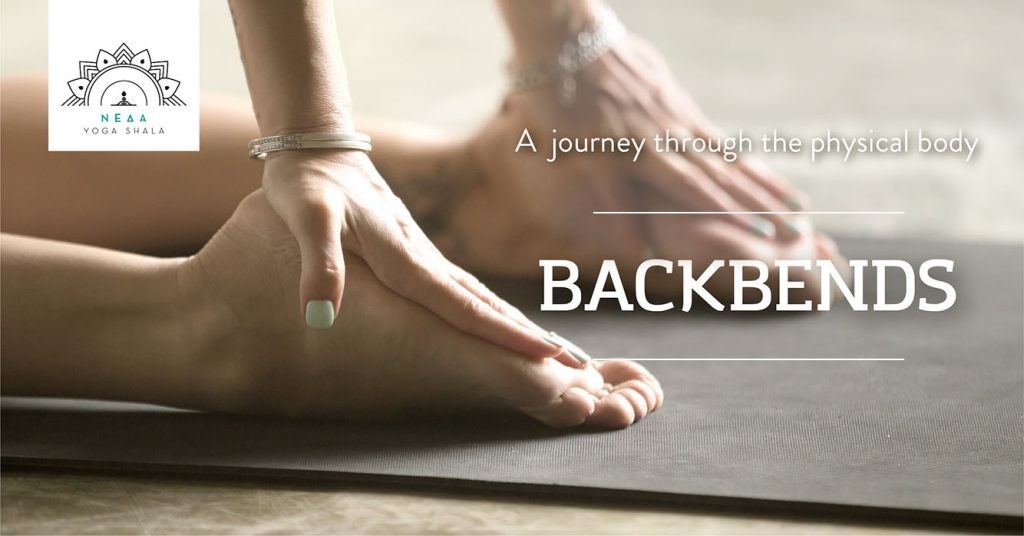
Backbends
Backbends are meant to understand the back parts of our bodies. The front part can be seen with the eyes but the back body can only be felt. That’s why I say these are the most advanced postures, where the mind begins to look at the back.
B.K.S. Iyengar
As we begin to examine backbends, it is important to have a clear image of the spine. The spine consists of 33 bones, the vertebrae. In particular, starting from the bottom up, we have the coccyx area (3-5 fused vertebrae), the sacrum (5 fused vertebrae), the lumbar spine (5 vertebrae), the thoracic spine (12 vertebrae) and the cervical spine (7 vertebrae).

When looking at the side view of the spine, we can see an S-curve. These natural curves are necessary for absorbing vibrations and for preserving the stability and the flexibility of the spine.
With the term "backbend" we describe all postures that involve extension in one or many parts of the spine, with greater range of extension found in the lumbar and cervical vertebrae. There are different kinds of spinal backbends in yoga. There are poses, or asanas, aimed at strengthening the back, that do not use the strength of the arms, but only the muscles of the back, e.g. salabhasana, poses that, apart from the back muscles, also use the strength of the arms and the shoulders for bending deeper, e.g. dhanurasana, and poses that use the muscles of the arms, of the shoulders but also of the legs, e.g. urdhva dhanurasana.
Physical benefits
Backbends are primarily aimed in stretching the front body: the chest, the solar plexus, the hips and the thighs. Different backbends aim at different parts of the body, but the sensation we should get from any such asana is the opening of the front side.
The backbends also strengthen the back muscles, a very important group of muscles for a healthier body posture and breath. Nevertheless, when we focus on the back and as we attempt to execute backbends, we should not forget that the most flexible part of the spine is the lower back and the neck. As a consequence, when we go deep in such poses the risk of injury is increased. So, we dive deep only after we first warm up and strengthen the thighs and the core, and after we open the hips, the shoulders and the chest.
Emotional benefits
Backbends relate to the anahata chakra, the heart chakra. By opening the chest and the whole front part of the body, which tends to close down, either out of fear, stress, tiredness or bad posture, we feel freer, happier, more confident and open, ready for new experiences and relationships. But, exactly because we are used to slouching, backbends may feel unnatural, like swimming in uncharted waters. That sensation brings up fear, anger and irritation, feelings which are interesting to observe and maybe try to transcend during our practice.
Backbends in yoga can become a spiritual journey. They open a little door inside of us, and the beauty is that we never know what we will find!